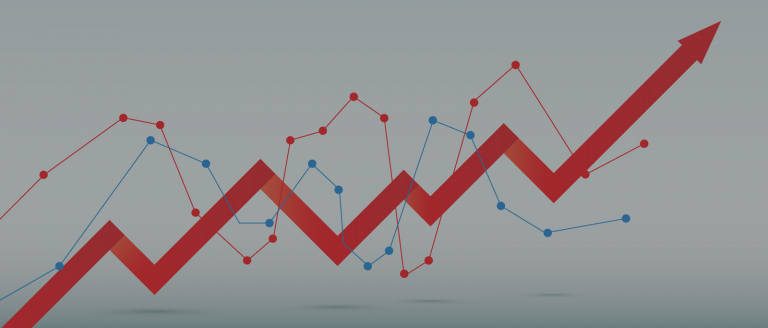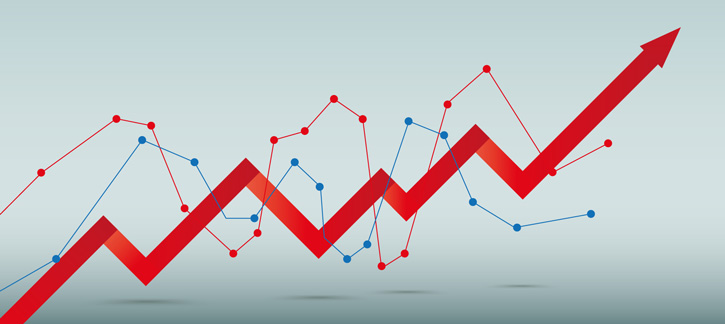In marketing, buzzwords are a dime a dozen, and digital marketers take this to new extremes. Is Growth Driven Design just the latest in a series of terms that will only be a fond memory in a few years, or is it a truly revolutionary way of approaching digital projects? Not if the trends we're seeing for quality, up to date designs, continue!
GDD, or Growth Driven Design, is causing some serious disruption of the traditional agency model and is forcing leaders to rethink best practices in digital marketing. Designing a website or other mobile property that presents your brand in the best possible light is a big investment, and an execution miss can cause ripples that are felt throughout your organization. How can you ensure that this relatively new method of project planning will result in a favorable outcome that meets -- or exceeds -- your business goals?
Why Traditional Design Models are Broken
When is the last time you visited a website and noticed immediately that the design felt outdated? Have you ever been on a mobile site that was impossible to navigate without constantly scrolling left, right, up, and down? Even the world's biggest brands are struggling to keep up with the design requirements of the constantly-changing demands of mobile marketing. Broken links, old content, a page that's impossible to find from major search engines -- these are all reasons that the traditional one-and-done model of web design is dead. In years past, updating your website every four to five years was the accepted norm, but the speed of change means that many websites are outdated in two years or less and ready for an expensive refresh (or worse yet, a complete overhaul.) After a short burst of interest from customers and prospects after a refresh, sites then enter into a period of slow decline until the cost of an update can be added to the budget and approved.
The true value of an updated website can be difficult to quantify, making it an easy target when budget cuts are required. It may seem easy to justify that you can make the updates "later", but the reality is that the longer you put off making changes to your site the more likely it is that you're losing business to your competitors. Not only do search engines reward sites that are updated on a regular basis, the significant time and monetary investment required by traditional web projects makes them a risky bet even in a good economy. Not to mention the ongoing issues of scope creep or business users who don't fully define how the website should look or function.
What is GDD?
Enter GDD: a way to provide continuous improvement to your website without the massive project cost in time and money that is associated with traditional website design models. Instead of trying to plan for every detail of your website or digital project ahead of time, growth driven design provides your team and agency with the flexibility to launch quickly and then make incremental changes on an ongoing basis. This freedom provides a higher range of creativity, lower overall cost, and less of a negative impact on team productivity than traditional web design approaches.
Growth driven design still incorporates many of the initial strategic steps that are traditionally associated with website projects: defining fundamental assumptions, goals, completing user research and journey mapping. However, Phase One only lasts about a month depending on the complexity of your site, so you're up and running on your new platform and seeing real value in a very short period of time. Once your core site is launched, then additional functionality is scoped in a series of shorter sprints that includes continuous analysis and optimization of customer needs -- resulting in a truly iterative process.
Benefits of Growth Driven Design
The speed of change in digital marketing makes it difficult to over-emphasize the importance of a nimble and flexible digital marketing strategy, with your website as the cornerstone. Not only is the time-to-benefit more favorable than with traditional design, but marketers are able to react quickly to changes in their customer base through a laser focus on real-time research and analysis. Everything works together to create a more personalized approach to visitor preferences and needs. The rigor of constant review of site content is also valuable as marketers determine the impact of specific messages, seeing how engaging content is for users. The appearance of the website is not the only part of the site under the microscope -- content is carefully reviewed and adjusted regularly as well.
Speed to market is not the only key benefit of GDD, as there are considerable financial advantages as well. If you have concerns about getting approval for a large website redesign project, growth driven design provides you with an alternative that has a lower upfront cost. While the tradeoff is an ongoing capital expenditure, this can make budgeting easier while covering the constant changes already required by website providers.
Successfully Planning a GDD Project
Marketing and technology teams shouldn't feel the full burden of successfully planning a GDD project. Instead, find a partner who has a strong track record of successfully implementing this new project planning model. It can also be valuable to have a partner without internal ties, as they can provide an unbiased and often unvarnished opinion about the viability of taking the project in a specific direction. When technology teams and marketing teams disagree -- as they often do -- your GDD agency partner provides a way forward through what could potentially become a project stalemate. Professionals who focus on this new strategic direction are able to help solidify and then answer questions such as why users are coming to your site, the value proposition that they receive once they arrive, and how your various web platforms are being accessed.
One of the most important parts of a successful GDD project is a comprehensive wish list that details everything you could possibly want to add to the site in the future. Once this list is fully vetted and prioritized, it will help provide a solid road map for future development. Keep in mind that the standard 80/20 rule is in full force, and expect that only 20 percent of the changes recommended will result in substantial additional value for the site. Your wish list should have some large buckets around the opportunities to boost conversion, improvements to user experience and how to incorporate user-based personalization. Some teams also include a DAM, or Digital Asset Management, system to help manage marketing assets such as downloadable white papers, images and articles on by topic.
Sustainable Growth Models
Creating a sustainable growth model is much easier with growth driven design than with traditional web design for a variety of reasons -- most importantly because your team is constantly focused on the next-best action. Which particular upgrade that you want to make to the site will cause the greatest positive impact on the customer experience, and ultimately on sales and business growth? When you strictly follow this methodology, you and your agency partner will be able to easily justify and see the pay off of any ongoing costs associated with growth driven design.
The speed of change continues to accelerate, and what was cutting edge only a few months ago can conceivably violate updated SEO rules tomorrow. The only way to future-proof your next website redesign project is to build ongoing improvement into the timeline -- and growth driven design may be the "next big thing" that allows your marketing and business growth to outpace the competition.


